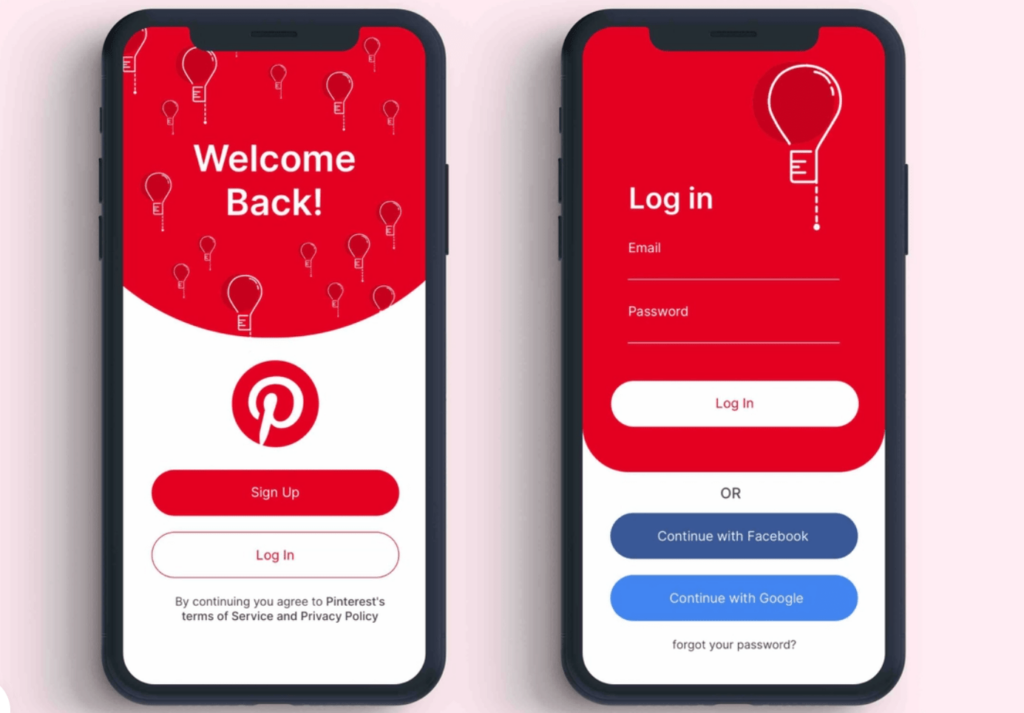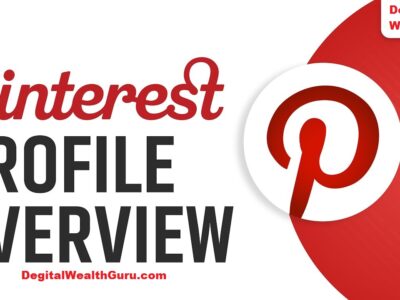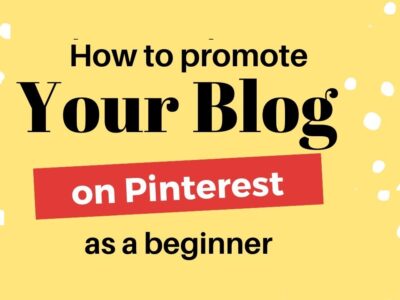Pinterest: it’s not just a place to collect recipes and dream wedding dresses. It’s a powerful visual search engine and a valuable marketing tool.
How do you make your Pinterest Images (pins) stand out in the sea of inspiring content?
How do you get them to rank not just on my Pinterest account, but on Google searches too?
This post dives into the strategies you need to make your Pinterest images shine and climb the search rankings.
The Power of Pinterest Images

Pinterest is a visual discovery platform, and high-quality images are essential for attracting attention and driving engagement. Here’s a breakdown of what makes a Pinterest image powerful:
1. First Impressions Matter
- Visual Appeal: In a sea of pins, a visually appealing image is crucial for stopping users in their tracks. Use high-resolution images with clear, crisp details and eye-catching compositions.
- Color Psychology: Colors evoke emotions and can influence user behavior. Consider using colors that align with your brand and the message you want to convey.
- Composition: Use the rule of thirds, leading lines, and other composition techniques to create visually balanced and engaging images.
2. Optimized for Pinterest
- Vertical Format: Pinterest is designed for vertical images. Aim for an aspect ratio of 2:3 or 1000 x 1500 pixels to ensure your pins are displayed optimally on the platform.
- Mobile-Friendly: The majority of Pinterest users browse on mobile devices. Ensure your images look great on smaller screens and load quickly.
3. Tell a Story
- Context: Images should provide context and clearly communicate the value of your pin. Use text overlays, graphics, or multiple images to tell a story and entice users to click.
- Brand Consistency: Maintain a consistent visual identity across your pins by using your brand colors, fonts, and logo. This helps build brand recognition and trust.
4. Drive Action
- Clear Call to Action: Encourage users to take action by including a clear call to action in your image or description. Use phrases like “Learn More,” “Shop Now,” or “Get Inspired.”
- Link to Relevant Content: Ensure your pins link to relevant and high-quality content that provides value to users. This could be a blog post, product page, or website.
5. Stand Out from the Crowd
- Unique Visuals: Use original photography or create custom graphics to make your pins stand out from the competition.
- Seasonal Content: Align your images with current trends and seasons to capture attention and increase relevance.
By focusing on these elements, you can create powerful Pinterest images that not only attract attention but also drive engagement and achieve your marketing goals.
Strategies to Make Your Pins Rank

1. Keyword Research: The Foundation of Pinterest SEO
- Understand User Intent: What are people searching for on Pinterest? What problems are they trying to solve? Use Pinterest’s search bar and guided search to explore related terms and discover popular topics in your niche.
- Use Keyword Research Tools: Utilize tools like Pinterest Trends, Google Keyword Planner, or other SEO tools to identify relevant keywords with high search volume and low competition.
- Long-Tail Keywords: Focus on long-tail keywords (more specific phrases) to target niche audiences and increase your chances of ranking for relevant searches.
2. Optimize Pin Titles and Descriptions: Tell People and Pinterest What Your Pin Is About
- Compelling Titles: Write clear, concise, and keyword-rich titles that accurately reflect the content of your pin. Keep titles under 50 characters to avoid truncation in search results.
- Detailed Descriptions: Craft detailed descriptions that provide context and entice users to click. Use relevant keywords naturally throughout your description. Aim for at least 150-200 characters.
- Call to Action: Include a clear call to action in your description to encourage engagement. Tell users what you want them to do (e.g., “Learn More,” “Shop Now,” “Get Inspired”).
3. Create High-Quality Content: Provide Value to Your Audience
- Informative and Engaging Content: Create pins that link to valuable content, such as blog posts, articles, tutorials, or product pages.
- Fresh Content: Regularly create new pins with fresh images and descriptions, even for older content. This signals to Pinterest that your content is active and relevant.
- Diverse Content Formats: Experiment with different pin formats, such as videos, carousels, and Idea Pins, to keep your audience engaged.
4. Use Relevant Hashtags: Increase Discoverability
- Mix of Hashtags: Use a combination of broad and specific hashtags to reach a wider audience.
- Hashtag Research: Research popular and relevant hashtags in your niche.
- Don’t Overdo It: Use a moderate number of hashtags (around 5-10) per pin. Avoid using irrelevant or spammy hashtags.
5. Organize Your Boards: Create a Clear Structure
- Relevant Board Titles: Use keyword-rich board titles that accurately reflect the content of the board.
- Detailed Board Descriptions: Write detailed board descriptions that provide context and attract followers.
- Section Your Boards: Use board sections to further organize your pins and improve discoverability.
6. Pin Consistently: Maintain an Active Presence
- Consistent Pinning Schedule: Create a consistent pinning schedule and stick to it. Use a scheduler tool like Tailwind to automate your pinning.
- Pin at Optimal Times: Pin when your target audience is most active on Pinterest.
- Fresh Pins: Regularly create and publish new pins to keep your content fresh and engaging.
7. Engage with Others: Build a Community
- Follow Relevant Users: Follow other users in your niche and engage with their content.
- Join Group Boards: Participate in relevant group boards to expand your reach and connect with other pinners.
- Respond to Comments: Respond to comments and messages on your pins to build relationships with your audience.
8. Analyze Your Results: Track Your Progress
- Pinterest Analytics: Use Pinterest Analytics to track the performance of your pins and boards.
- Identify Top-Performing Content: Analyze which pins are driving the most engagement and traffic.
- Refine Your Strategy: Use your insights to refine your strategy and improve your results over time.
Beyond Pinterest: Ranking on Google

While the above strategies focus on Pinterest SEO, they also contribute to ranking on Google. Google indexes Pinterest boards and pins, so optimizing your Pinterest content can indirectly improve your search engine rankings.
- Rich Pins: Enable Rich Pins to add more context to your pins. This can include product information, article details, or recipe ingredients. This additional information can help your pins rank better in Google search results.
By following these strategies, you can create captivating Pinterest images and optimize them to rank high in both Pinterest and Google search results. This will help you reach a wider audience, drive traffic to your website, and achieve your marketing goals.
Conclusion: Captivating Visuals for Maximum Engagement
Mastering Pinterest for search engine visibility requires a multifaceted approach. It’s not just about pretty pictures; it’s about strategic optimization. Here’s a recap of the key takeaways:
- Visual Appeal is Paramount: High-quality, vertical images with clear text overlays and consistent branding are essential for grabbing attention on Pinterest.
- Keywords are Key: Thorough keyword research is the foundation of Pinterest SEO. Use relevant keywords in your pin titles, descriptions, board titles, and board descriptions.
- Content is King (and Queen): Create pins that link to valuable and engaging content. The quality of the content you link to directly impacts your pin’s performance.
- Organization Matters: Organize your pins into relevant boards with keyword-rich titles and descriptions. Use sections to further categorize your content.
- Consistency and Engagement are Crucial: Pin consistently, engage with other users, and participate in relevant group boards to increase your visibility.
- Analytics Provide Insights: Regularly analyze your Pinterest analytics to track your progress and refine your strategy.
By implementing these strategies, you can optimize your Pinterest presence to not only attract attention to the platform itself but also improve your chances of ranking in Google search results. This combined approach allows you to reach a wider audience, drive more traffic to your website, and ultimately achieve your marketing goals.
Remember that SEO is an ongoing process, so continuous monitoring, analysis, and refinement are key to long-term success you never imagined.
Discover more from Digital Wealth Guru
Subscribe to get the latest posts sent to your email.




![Pinterest Images - 13 New Pinterest Recipes: From Screen to Plate [$1M Business Idea] - 12](https://digitalwealthguru.net/wp-content/uploads/2023/06/BestHamburger-400x300.jpeg)



![Pinterest Images - 24 New Pinterest Nail Ideas to Grow Your Nail Salon Business [14 Tips & Tricks] - 23](https://digitalwealthguru.net/wp-content/uploads/2023/06/Pinterest-20Nails.jpg)
Comments